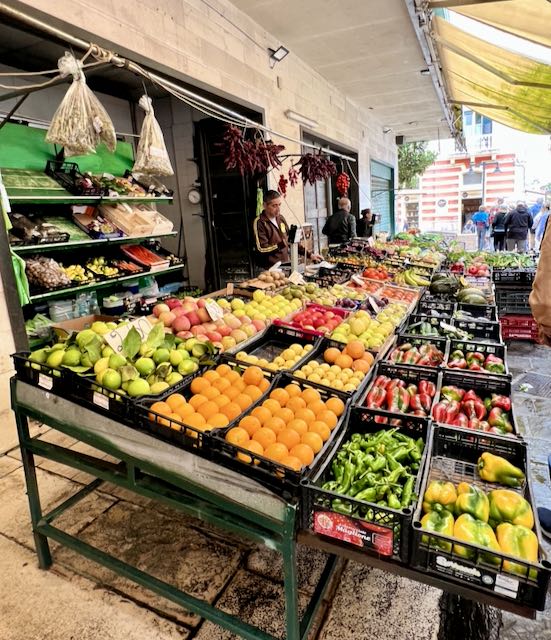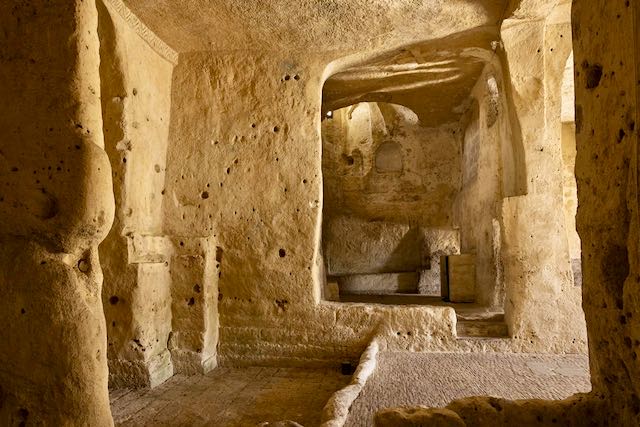We left Croatia and crossed over the Adriatic Sea to the coast of Italy – Bari. Several years ago, we had driven along the Adriatic coast of Italy and about when we got to Bari, we turned right and headed to the other side. Not sure if we actually made it to Bari or not, but no matter we weren’t going to go there anyway as our trip today was to the city of Matera. Comprised of two districts – Sasso Caveoso and Sasso Barisano is well known for the ancient cave dwellings which have been habited since the Paleolithic period.

To describe Sassi as “one of the most unique landscapes in Europe” would be an understatement. The coach dropped us off in the more industrial section of the city and we began our walk passing by the more traditional shops and local markets. However, once through the more modern section of town we came upon the spectacular view of the cave dwellings.




The Sassi originate from a prehistoric troglodyte settlement and are suspected to be among the first human settlements in Italy. There is evidence that people were living here as early as the year 7000 BCE. These homes were dug into the calcarenitic rock (a type of limestone) itself. The streets in some parts of the Sassi often run on top of other houses. The ancient town grew up on one slope of the ravine created by the Gravina river.

Beset by extreme poverty and riddled with malaria, the unhealthy living conditions were considered inhuman and an affront to the modern new Italian Republic. In the 1950s, the government of Italy forcefully relocated most of the population of the Sassi to areas of the developing modern city. However, people continued to live in the Sassi, and Matera is the only place in the world where people can boast to be still living in the same houses of their ancestors of 9,000 years ago.


Until the late 1980s this was considered an area of poverty, since many of these houses were, and in some cases still are, uninhabitable. The current local administration, however, has become more tourism-oriented, and it has promoted the regeneration of the Sassi with the aid of the European Union, the government, and UNESCO.



We visited one of the cave homes which is showcasing how the inhabitant’s lives would have been, complete with fixtures and fitting. The entire family (on average six members) including animals like donkeys, chicken, and pigs lived together in the cave and it has been furnished as it would have been in those days.





Materans also worshipped in cave churches, many of which are adorned with frescoes painted directly on the rock.




The entire area is really quite amazing and certainly not at all what we had expected to see. After our walking tour we reboarded our bus and headed back to the ship.
This post totally blew my mind!! I can’t imagine people living that long in dwellings!
Yes, it was really amazing to see these cave homes.
I wonder how this has not been highlighted before! I lived in Naples years ago and should have learned more about that part of the coast! Thanks for opening my eyes. What kind of a tour are you on??
We are on an Oceania Cruise and it was one of the offered excursions. Really good.
Thank you for continuing to share your fantastic journey.
Never heard of cave dwellings this old and in Italy!! Great post!
Richard